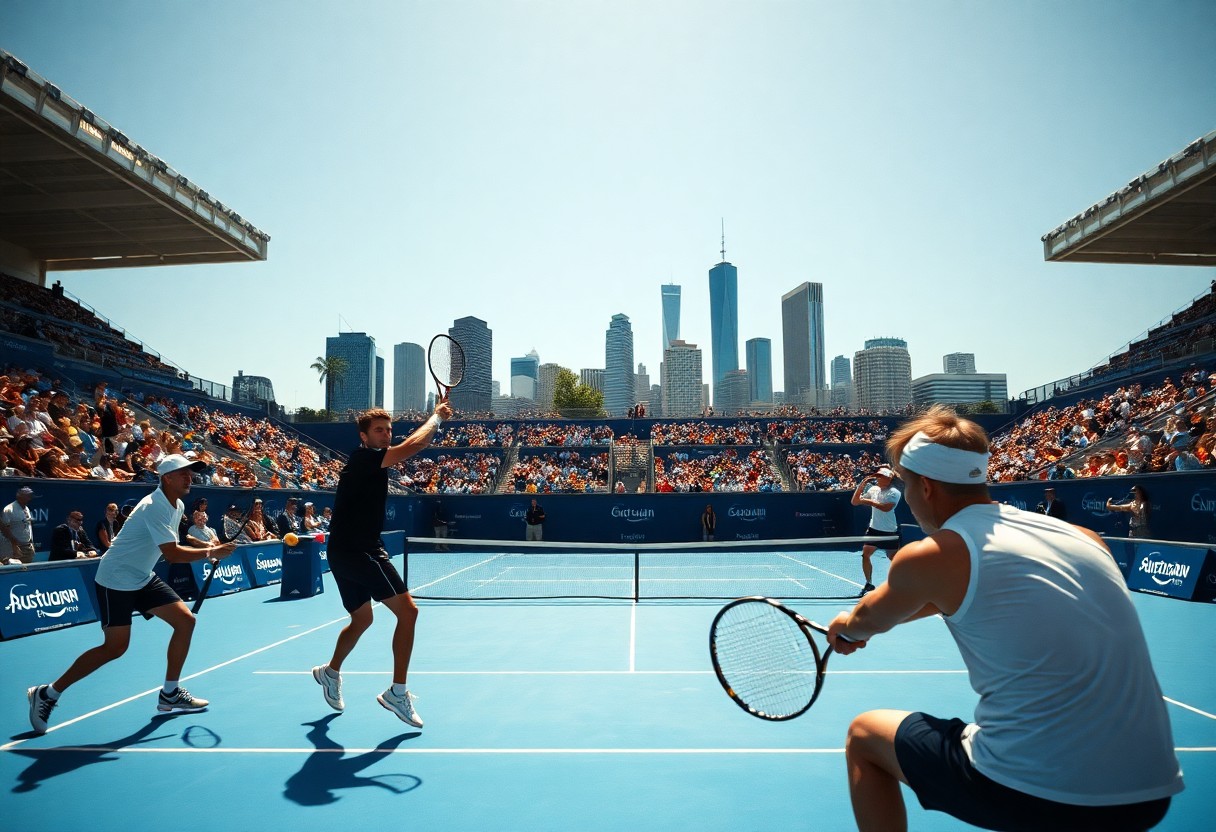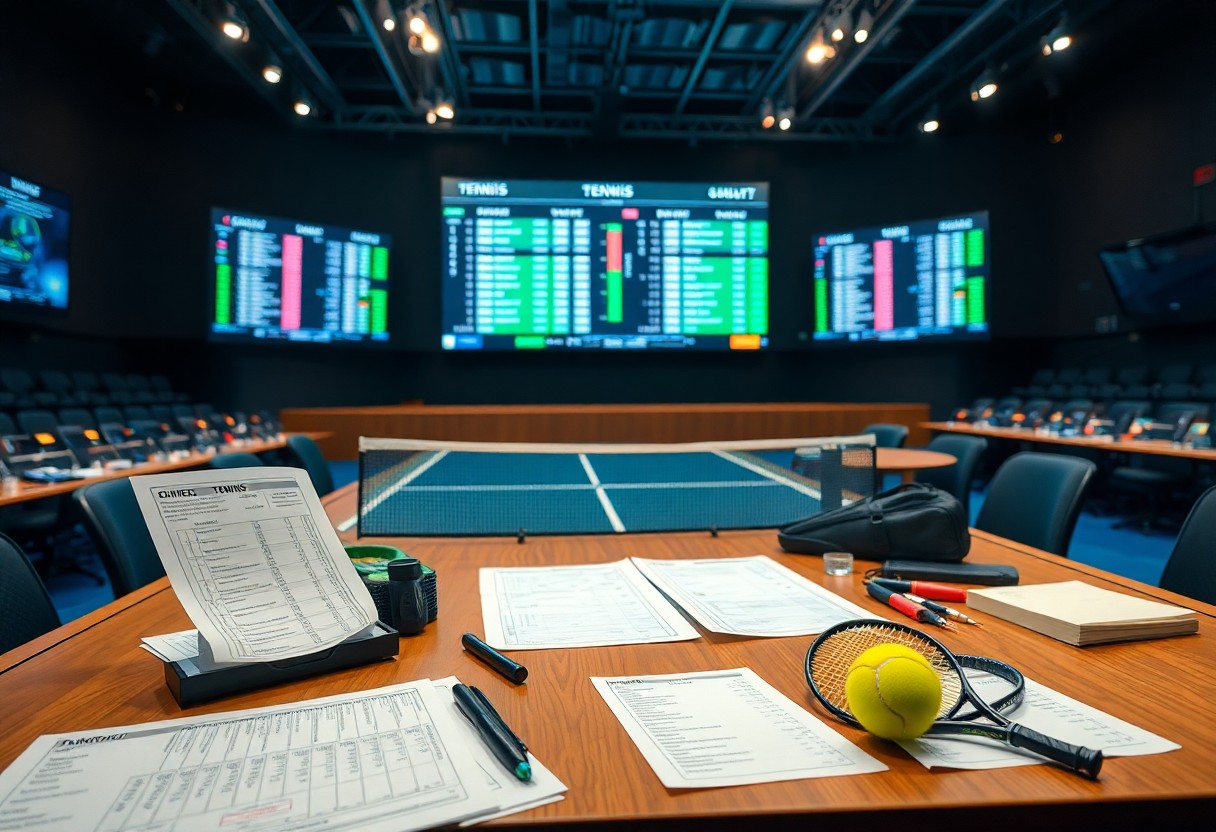There’s a treasure trove of insightful strategies that elite tennis players discover during the intense competition of the Australian Open. As you research into this prestigious tournament, you’ll find that the champions consistently leverage mental resilience, maintain peak physical fitness, and utilize strategic game plans tailored to their opponents. By understanding the secrets behind their success, you can apply these lessons to your own game, ultimately enhancing your performance both on and off the court. Join us as we explore these valuable insights from the world of elite tennis.
The Competitive Landscape of the Australian Open
A key aspect of the Australian Open is its highly competitive environment, where elite tennis players from around the world converge to battle for glory. The tournament not only showcases remarkable athletic talent but also emphasizes the mental fortitude required to excel at such a prestigious event. You’ll witness players pushing their physical and psychological limits as they strive to emerge victorious amidst a backdrop of intense rivalry.
Historical Significance
Around its inception in 1905, the Australian Open has evolved into one of the four Grand Slam tournaments, symbolizing a pinnacle in the tennis world. It holds a deep historical significance by showcasing legendary players and iconic matches that have shaped the sport. As you investigate into the tournament’s rich past, you’ll appreciate how it has continuously served as a platform for emerging stars while preserving the legacy of tennis greats.
Current Trends in Elite Performance
Across the years, you may notice an evolution in the strategies and training regimens of elite players at the Australian Open. Observing these changes helps you understand how modern athletes adapt to increasingly fierce competition. Techniques such as data-driven analysis and psychological conditioning are prevalent, showing that the players who harness these insights often achieve superior performance on the court.
But as you explore current trends in elite performance, it’s evident that players are increasingly employing advanced analytics to refine their techniques and enhance their game strategy. They embrace mental conditioning strategies, focusing on resilience and focus to manage pressure effectively. Moreover, there’s a noticeable emphasis on physical fitness, enabling players to endure longer matches while maintaining peak performance. These evolving trends not only reshape the landscape of the tournament but also push you to consider how much the modern game has progressed over time.
Mental Resilience and Focus
Even in the high-pressure environment of the Australian Open, elite tennis players showcase exceptional mental resilience and focus. This mental toughness allows you to stay composed, manage stress effectively, and maintain peak performance through each grueling match. Concentrating on every point and remaining present in the moment are key ingredients in your pursuit of success on the court.
Psychological Strategies of Top Players
Against the backdrop of intense competition, top players implement various psychological strategies to enhance their focus and performance. Visualization techniques, affirmations, and mindfulness exercises play pivotal roles in your preparation. By developing a tailored mental toolkit, you empower yourself to face challenges and stay mentally sharp throughout the tournament.
Overcoming Adversity on the Court
Adversity can strike unexpectedly during matches, presenting challenges such as injuries, unfavorable conditions, or tense situations.
A profound aspect of success in tennis is your ability to harness adversity as a means for growth. When faced with setbacks, embracing a positive mindset allows you to transform challenges into opportunities for development. Staying focused on your goals, you can use breathing techniques and self-talk to regain control. Acknowledging the discomfort of difficult moments not only sharpens your mental resilience but also prepares you for future challenges, ultimately propelling your journey to success.
Physical Conditioning and Training Regimens
Despite the glitz and glamour of the Australian Open, elite tennis players emphasize rigorous physical conditioning and tailored training regimens to stay competitive. These methods not only enhance performance on the court but also help prevent injuries and improve endurance. By focusing on a blend of strength, agility, and cardiovascular fitness, you can gain the upper hand over your opponents, making physical conditioning a vital part of your preparation.
Fitness Techniques Employed by Champions
Physical conditioning for champions often includes high-intensity interval training, agility drills, and strength exercises that build core stability and flexibility. You’ll find that successful players integrate diverse fitness techniques, such as weightlifting, resistance training, and even yoga, to develop well-rounded athleticism. This comprehensive approach equips you to tackle the physical demands of grueling matches.
Recovery Strategies during the Tournament
Between matches at the Australian Open, elite players focus intensely on their recovery strategies to ensure peak performance in the next round. These strategies include adequate hydration, optimal nutrition, and techniques to relieve muscle tension.
With intense match schedules and travel, you’ll find that successful players prioritize active recovery, utilizing methods like stretching, foam rolling, and soft tissue work to relieve soreness and improve circulation. Many also invest in expert massage therapy and use advanced technologies like cryotherapy or compression garments to expedite healing. By adopting these recovery techniques, you can minimize fatigue and ready yourself for the challenges ahead, ultimately maximizing your performance throughout the tournament.
Strategic Gameplay and Adaptability
All elite tennis players showcase their ability to strategize and adapt during matches at the Australian Open. Whether it’s adjusting their serve, implementing unexpected shots, or reading their opponent’s rhythm, these tactics often define their success on the court. By continually assessing and altering their gameplay, players can turn the tide in high-pressure situations, reinforcing the importance of mental agility alongside physical prowess.
Match Analysis and Tactics
Analysis of previous matches offers players insights into their rivals’ habits and strengths. By scrutinizing game footage, you can identify patterns in your opponent’s gameplay, allowing you to craft an informed strategy that plays to your advantage. This level of preparation not only reinforces your tactical prowess but also fosters confidence on the court, letting you approach matches with a clear game plan.
Exploiting Opponent Weaknesses
With a keen eye for detail, successful players analyze their opponents to identify potential vulnerabilities. You can enhance your likelihood of victory by focusing on these weaknesses during matches, adjusting your shots and tactics to put pressure on your rival. Recognizing their less dominant areas empowers you to dictate the pace of the game.
Match situations often expose opponents’ weaknesses, such as difficulty with particular shots or physical limitations during prolonged rallies. By targeting these specific flaws, you can disrupt their rhythm and confidence. Employing tailored strategies that exploit these vulnerabilities keeps your opponent on the defensive, increasing your chances of seizing control and ultimately achieving success on the court.
The Role of Coaching and Support Staff
To excel at the Australian Open, elite tennis players leverage the expertise of coaching and support staff. These individuals play a vital role in crafting tailored strategies for each match, ensuring players are not only physically prepared but also mentally resilient. The synergy between players and their coaches can often mean the difference between mere participation and triumphant success.
Impact of Coaching Styles
Support from coaches varies significantly based on their individual styles, which can enhance or hinder a player’s performance. Different coaching approaches—be it a strict disciplinarian or an encouraging motivator—can profoundly shape your mindset and game. Understanding how your coach’s style complements your strengths and weaknesses is vital for your growth and success on the court.
Team Dynamics and Player Development
Impact of a positive environment and strong communication within your support team can significantly influence your development as a player. A healthy dynamic among your coaches, trainers, and support staff fosters a culture of trust and growth, allowing you to thrive under pressure and develop resilience. Unity and collaboration among your team encourages you to push beyond limits and reach new heights in your performance. In fact, nurturing these relationships facilitates a supportive learning atmosphere, ensuring that you receive constructive feedback and personalized guidance, which are important for steady progress in your career journey.
The Importance of Fan and Media Engagement
For elite tennis players, the Australian Open serves as a prime platform for fan and media engagement. Building strong connections with your audience can lead to enhanced support, which in turn positively influences your performance on the court. By being approachable and relatable, you can foster a loyal fan base that not only cheers for you but also amplifies your influence in the tennis world.
Building a Personal Brand
On the court, your performance is paramount, but off the court, building a strong personal brand is equally important. Your unique values, interests, and personality traits can set you apart in a highly competitive field, allowing you to resonate with fans on a deeper level.
The Influence of Public Perception
One of the most significant aspects of your career is how the public perceives you. It can impact your sponsorship opportunities and influence fan loyalty. A positive image can elevate your status, while negative perceptions may lead to undesired consequences. Thus, managing your public image through strategic media engagement is vital.
Engagement with the media and fans can shape your reputation profoundly. Effective communication can turn around any negative perceptions, helping you harness the power of social media and traditional outlets. Staying authentic while addressing controversy can enhance your credibility. It’s worthwhile to focus on maintaining an image that reflects your values and sportsmanship to cultivate a positive rapport with your audience and sponsors. Ultimately, how you present yourself off the court will greatly influence your overall career trajectory.
To wrap up
Hence, as you observe the elite tennis players at the Australian Open, it becomes evident that their success stems from a blend of mental fortitude, strategic preparation, and adaptive performance under pressure. By incorporating lessons from their unwavering focus, rigorous training, and ability to harness energy in high-stakes moments, you can learn to elevate your own game. Embracing these insights allows you to unlock your potential and push through challenges, whether on the court or in life.




